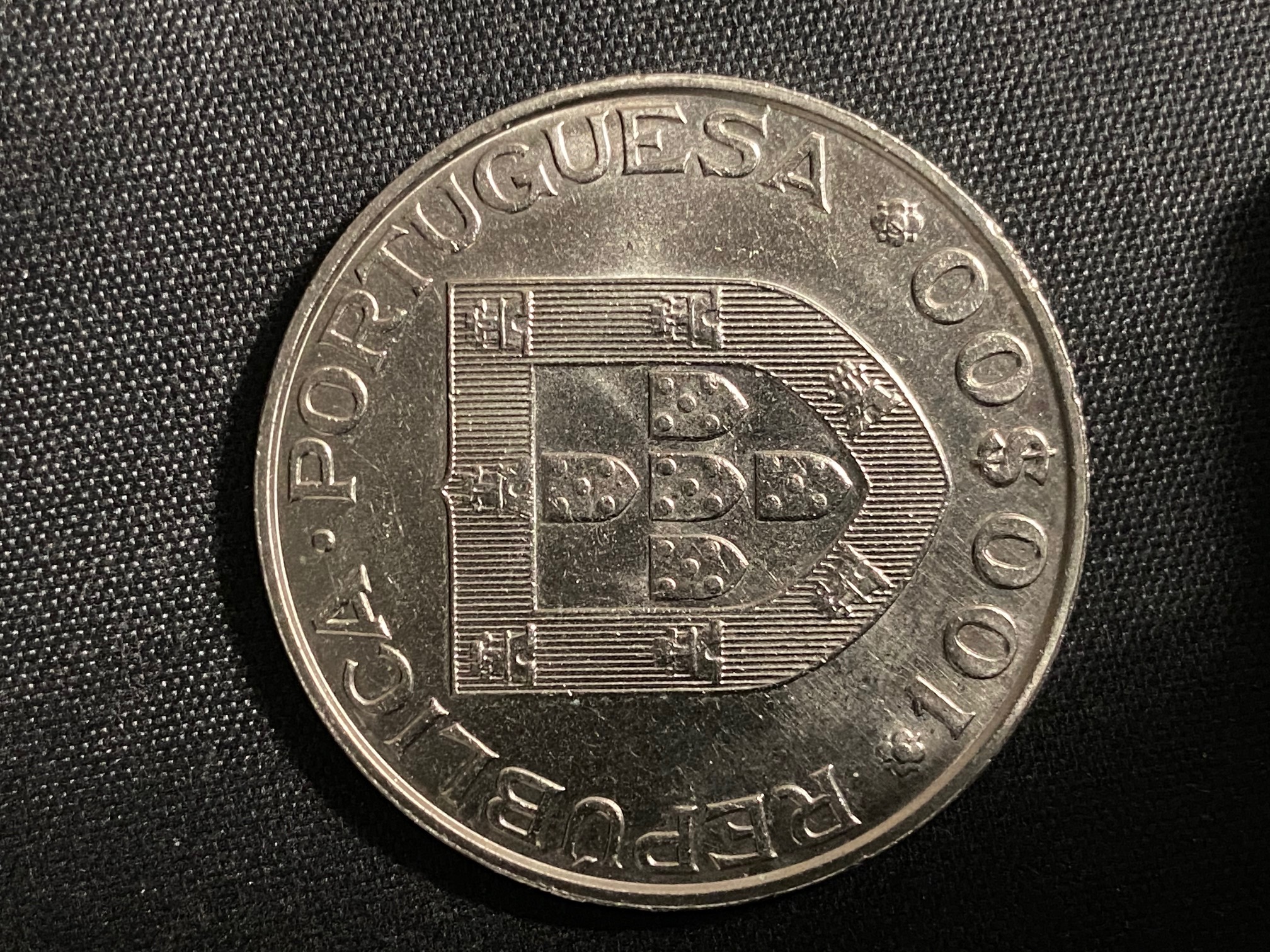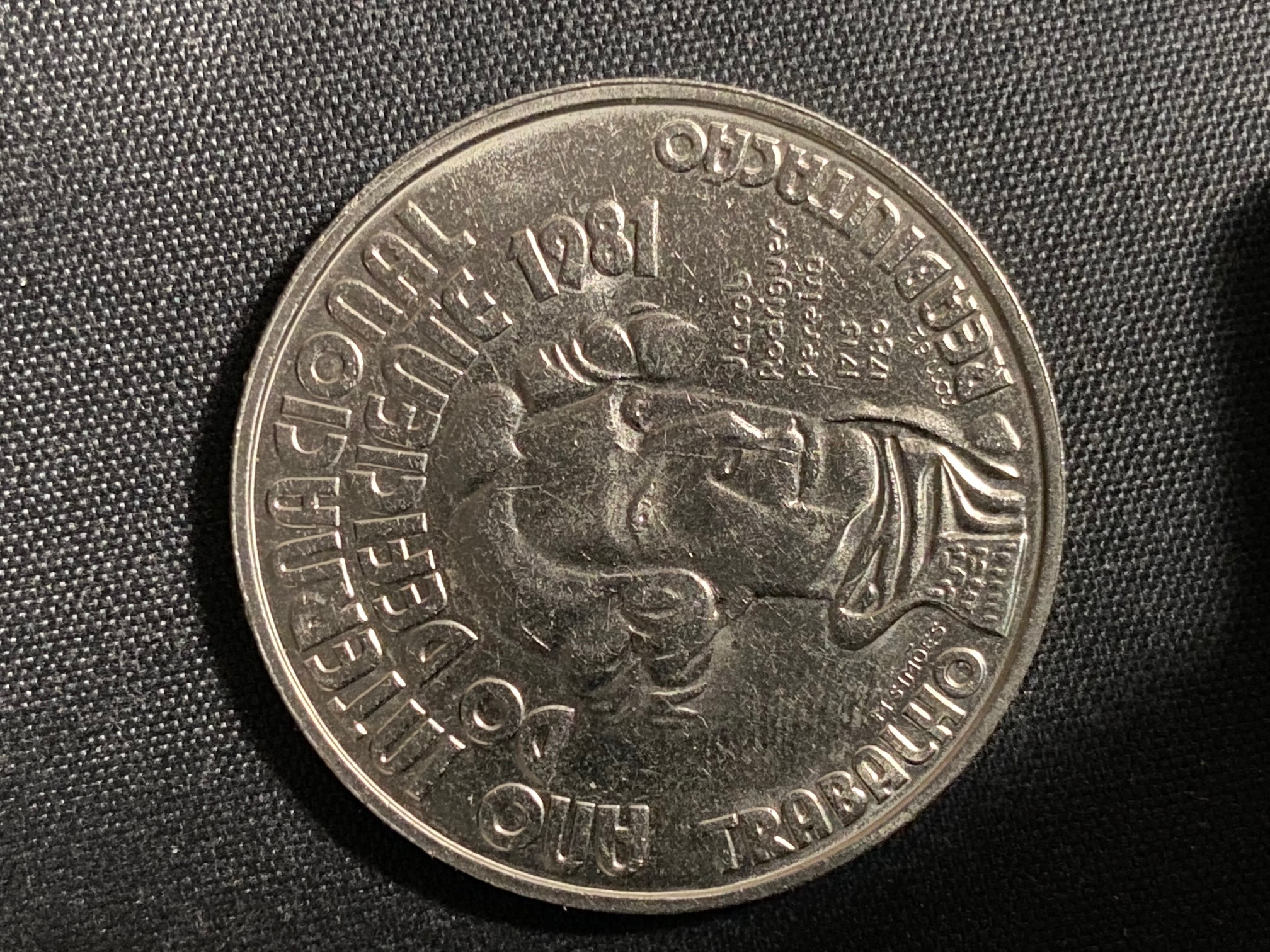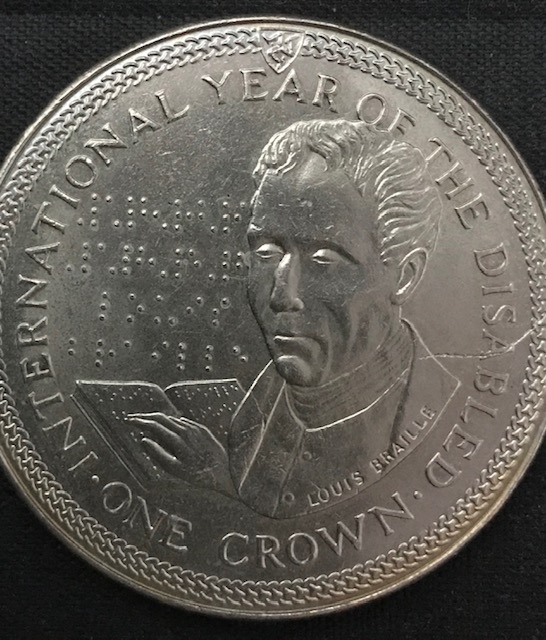Let’s continue the International Year of Disabled Persons coin series with Portugal. Portugal released two coins to commemorate the International Year of Disabled Persons, a 25 and a 100 Escudo. Though the official date of IYDP was 1981, these coins were released to circulation in 1984, for the opening of the XV. international rehabilitation congress. The criteria of the IYDP coin issuance was to depict people who despite of their disability made a significant achievement in life, or contributed to the lives of people with disabilities. Portugal chose an example of both groups. António Feliciano de Castilho who was a blind poet, and Jacob Rodrigues Pereira who was instrumental in developing sign language.
Both coins were released into general circulation. The design was created by Armando Matos Simões.
Antonio feliciano de Castilho, 25 Escudos

- Weight: 11 G
- Diameter: 28.5 MM
- Composition: copper-nickel
- Mintage: 1.990.000
- KM# 624, Numista

Antonio feliciano de Castilho lived between 1800 and 1875. At the age of six, due to measles he lost his sight. He was able to study with the help of his brother. He obtained education in Portuguese and classic Latin language and literature.
To put his achievement into perspective, he was 9 years older than Louis Braille, who invented a writing system for the blind. Before that, blind people were able to use raised and engraved letters for reading and writing, but due to its low efficiency, the main method of learning was memorization, which required a sighted reader.
Though he primarily wrote in the romanticist style, he is also known about other genres. Around 1850 he studied pedagogy, and developed a reading system, which he was able to promote when he was named the government commissary of primary education. Later in 1854 he traveled to Brazil and promoted his method there as well.
He translated from several languages, the most known were Latin classics, though he also translated Goethe and Shakespeare, but without any knowledge of the languages.
Jacob Rodrigues Pereira, 100 Escudos

- Weight: 16.6 G
- Diameter: 34 MM
- Composition: copper-nickel
- Mintage: 990.000
- KM# 625, Numista

Jacob Rodrigues Pereira lived between 1715 and 1780. He was born in Spain, in a Portuguese family of Jewish descent. Though he was baptised as Francisco António, his family secretly continued practicing their Jewish religion, and openly returned to Judaism when they moved to France, escaping inquisition.
Pereira had a diverse education. Amongst many other things, he published a Tahitian vocabulary, and invented a calculating machine. But the reason why he is featured on this coin is because of his pioneer work in the education of deaf and mute people.
Allegedly one of his sisters was deaf, which sparked his interest in order to communicate with her. He studied anatomy for 10 years, and worked out a system where each sound was represented by a hand shape. In 1746 a French family hired him to teach their death son for three years. In 1749, he presented his system at the Royal Academy of Sciences in Paris. His achievement was also presented to king Louis XV.
In 1778, the Royal Academy published his work, “Observations sur les Sourds et Muets”. Unfortunately, I was not able to find a copy of this work, but most likely this publication only contains his observations, because his manual alphabet is not known today. However, he is credited as the first person to teach a deaf person to speak. Given the little and conflicting information about him, it is not obvious if he used his anatomy education to teach a deaf person to speak, or his manual signs to communicate, but it was most likely the latter.
References:
- Jacob-Rodrigues Pereira – Biography, History and Inventions – Ramon Llull
- Ano Internacional do Deficiente – Moedas Comemorativas Portuguesas
- Jacob Rodrigues Pereira – Wikipedia
- Antonio feliciano de Castilho – Wikipedia, the Portuguese version is much more detailed than the English

